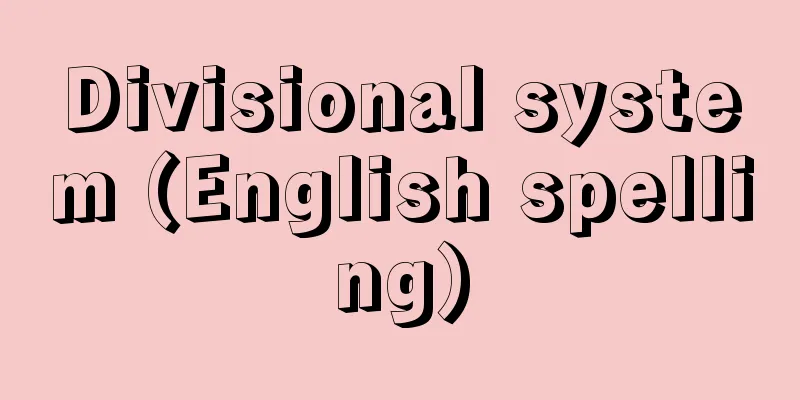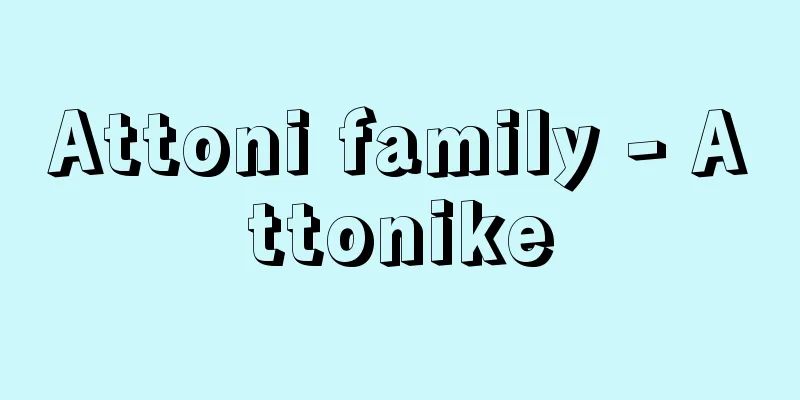Spanish dance - Spanish dance

|
Spanish dance can be broadly divided into classical dance (baile clásico), a performing art that developed from court dance, and the many folk dances (bailes regionales) scattered throughout Spain. Flamenco (baile flamenco), created by the Roma (formerly called gypsies) of Andalusia, is also a type of folk dance, but it has been technically refined and polished, and has a unique charm that can be proudly presented to the world as a performing art in modern times, and it can be said to be different from other folk dances. 20th century stage dancers such as Argentinas often created repertoires that mixed these three dances, and created their own unique Spanish dance to the music of Spanish composers such as Albéniz, Granados, and Falla, and gained international acclaim. [Masa Ichikawa and Kazuko Kuniyoshi] Classical DanceIn the 16th century, dances were performed to celebrate weddings in European courts. At the court of Guadalajara in Spain, the galliarda (Italian; gallarda in Spanish) was danced, and it is recorded that it showed advanced techniques such as jumps and turns. The pavane (French; pavana in Spanish) was also danced, but this solemn, processional dance is said to have been danced in tandem with the lively gallarda. In the 18th century, the bolero became popular, and even the study of "bolero studies" was born. There were schools teaching bolero in every major city, and it was very popular despite the oppression of the Christian church. The step "glissado", which is currently used in ballet, originated in Cadiz, Spain, and was called "glissa". Similarly, the "pas de bourre" is said to have originated from the step "passura", which is often used in bolero. The bolero that still exists today is danced with castanets in hand, and is characterized by an elegance that recalls the Spanish courts of the 18th century. Dancers who performed this classical dance include Argentina, Pilar López (1912-2008), and Manolo Vargas (1914-2011). [Masa Ichikawa and Kazuko Kuniyoshi] Folk DanceThere are many Spanish folk dances, each with its own characteristics, but some of the most well-known are the sardana in Catalonia, the fandango and sevillanas in Andalusia, the seguidilla in Castile, and the jota in Aragon and Navarra. Each dance is performed in costume unique to the region, accompanied by castanets, guitars, tambourines, and singing. Sardana is a round dance, characterized by skipping steps. Originally it was only for women, and men were forbidden to enter the circle. In Barcelona, it is danced at the September festival of the Merced Order, as well as at other celebratory events. The fandango is danced to alternating guitar and vocal accompaniment, with set steps at the end of each section that are repeated. It has a lively and enthusiastic atmosphere, and the dancers compete with each other for technique. When dancing with two people, one person decides the steps and the other takes over and dances with more skill. Sevillanas are danced throughout the city during the Seville Spring Festival (Feria). They are usually performed as a pair and can be simple or complex, depending on the skill level of the dancers. The seguidilla originates from La Mancha, the region famous for Don Quixote. When the first line of the accompanying song ends, the dancers suddenly stop. Sevillanas also share this characteristic, and are therefore also called seguidillas. The jota is found all over Spain, but the most famous is the jota aragonesa from Aragon. It is danced by many pairs of men and women, with the men wearing headscarves and narrow trousers, and dancing with quick footwork and slightly leaning forward. [Masa Ichikawa and Kazuko Kuniyoshi] flamencoThere are several theories about the origin of the name flamenco, including that it comes from the fact that the standing dancing style resembles a flamingo, that it has a chic feel like the Flemish people, and that it is a slang term derived from the word flama, which means fire or passion. The Roma, a minority group that had been moving around for a long time, are said to have settled in Andalusia around the 17th and 18th centuries, establishing settlements in various places, such as Sacramonte and Albaicin in Granada, Triana in Seville, and the port city of Cadiz, where they incorporated indigenous folk songs and dances to create their own unique style of singing and dancing. In the mid-19th century, cafés cantantes (cabarets) were established to perform these Roma singers and dancers, and they flourished, but by the beginning of the 20th century they had fallen into decline, and instead they began to be danced on theater stages, producing masters such as Pastora Imperio (1888-1979) and Vicente Escudero. Subsequent major dancers include Carmen Amaya (1913-1963), Gran Antonio (real name Antonio Luis Soler), Antonio Gades (1936-2004), Cristina Hoyos (1946- ), Mario Maya (1937-2008), Merche Esmeralda (1950- ), Manuela Carrasco (1958- ), and Joaquín Cortés (1969- ), who continue to captivate audiences with their sophisticated direction and advanced technique. Flamenco music often expresses the sorrow and suffering of love, and is called cante jondo (hondo) (meaning deep song), but there are also light and cheerful cante chico, non-Roma Andalusian folk songs, songs imported from Central and South America, and a mixture of these. Dances that accompany the music include alegrías, bulerías, farruca, soleares, tientos, and siguiriyas. In fandangos and sevillanas, which are choreographed to Andalusian folk songs, the dancers often wear castanets in both hands, even though they do not normally hold them. Flamenco requires a sense of unity between the cante (singing), baile (dancing) and toque (guitar playing), but sometimes the dance is performed without singing or guitar, just to the rhythm. Another characteristic is that the dance itself is musical, and dancers perform pitos (finger tapping), palmas (hand clapping) and zapateado (foot stomping) while dancing. There are male and female dances, and for women, the posture is S-shaped, with curved arm movements being important, while for men, standing upright and precise, strong foot stomping is required. Flamenco's popularity has spread abroad, and it has produced many international dancers. In Japan, Spanish dance was introduced in earnest by Kawakami Suzuko (1902-1988), and flamenco was later established thanks to the consistent efforts of Pepe Saikyo (1912-), Komatsubara Yoko (1931-), Nagamine Yasuko (1936-), Kojima Shoji (1939-), and Yamazaki Yasushi (1943-). From the 1980s to the 1990s, many young dancers with excellent skills, such as Ikariyama Nana (1950-) and Irimajiri Tsuneko (1961-), emerged. [Masa Ichikawa and Kazuko Kuniyoshi] "The History of Flamenco" by Hamada Shigeo (1983, Shobunsha)" ▽ "Flamenco Encyclopedia" edited by the Paseo Editorial Department (1990, Paseo) " ▽ "Dances of the World - Ethnic Dances, Their History and Culture" by Gerald Jonas, translated by Tanaka Sachiko and Yamaguchi Junko (2000, Taishukan Shoten)" ▽ "Invitation to Flamenco" edited by Kojima Shoji (2002, Shinshokan) [References] | | | | | | | | | | |A musical dance from the Andalusian region of southern Spain. The dance itself is musical, with elements such as pitos (finger clapping), palmas (hand clapping), and zapateado (foot stomping). Seville, Spain ©Shogakukan "> flamenco Source: Shogakukan Encyclopedia Nipponica About Encyclopedia Nipponica Information | Legend |
|
スペイン舞踊を大別すると、宮廷舞踊から発達した舞台芸術である古典舞踊(バイレ・クラシコbaile clásico)と、スペイン全土に散在する多くの民俗舞踊(バイレス・レヒオナーレスbailes regionales)とに分けられる。アンダルシア地方のロマ(かつてジプシーとよばれた)がつくりあげたフラメンコ(バイレ・フラメンコbaile flamenco)は民俗舞踊の一種でもあるが、技術的に練磨され洗練されて、現代では舞台芸術としても世界に誇りうる独特の魅力をもっており、他の民俗舞踊とは一線を画しているともいえよう。アルヘンティーナなど20世紀の舞台舞踊家はこの三つの舞踊を混ぜ合わせたレパートリーをつくることが多く、アルベニス、グラナドス、ファリャなどスペインの作曲家の音楽による独自のスペイン舞踊を創造し、国際的な評価を得た。 [市川 雅・國吉和子] 古典舞踊16世紀のヨーロッパの宮廷では結婚式を祝って舞踊が演じられた。スペインのグアダラハラの宮廷ではガリアルダgalliarda(イタリア語。スペインではガリャルダgallarda)が踊られ、ジャンプや旋回など高度な技術がみられたと記録されている。パバーヌpavane(フランス語。スペインではパバーナpavana)も踊られたが、荘厳で行列式のこの踊りは活発なガリャルダと対(つい)で踊られたといわれる。18世紀にはボレロboleroが流行し、「ボレロ学」という学問まで生まれ、各主要都市にはボレロを教える学校があり、キリスト教会の弾圧にもかかわらず、大いにもてはやされた。現在バレエに使われている「グリッサード」というステップは、スペインのカディスで生まれ、「グリッサ」といわれていた。同じく「パ・ド・ブレ」はボレロのなかで頻繁に使われる「パスーラ」というステップから生まれたといわれる。現存するボレロはカスタネットを手に持って踊られるもので、18世紀のスペイン宮廷を想起させる優雅さを特徴としている。古典舞踊を踊った舞踊家に、アルヘンティーナ、ピラール・ロペスPilar López(1912―2008)、マノロ・バルガスManolo Vargas(1914―2011)などがいる。 [市川 雅・國吉和子] 民俗舞踊スペインの民俗舞踊は数多く、各地方でそれぞれの特色をもっているが、代表的なものに、カタルーニャ地方のサルダーナ、アンダルシア地方のファンダンゴ、セビリャーナス、カスティーリャ地方のセギディーリャ、アラゴン地方やナバラ地方のホタなどがある。それぞれ地方独特の衣装を着け、カスタネット、ギター、タンバリンなどの伴奏や歌にあわせて踊られる。 サルダーナsardanaは輪舞で、スキップ風のステップをするのが特徴である。もとは女性だけのもので、男性は輪の中に入ることが禁じられていたという。バルセロナではメルセド教団の9月の祭りで踊られるほか、祝祭的な行事の際にも踊られることがある。 ファンダンゴfandangoは、ギターと歌が交替する伴奏にあわせて踊るが、各節の終わりには決まったステップがあり、繰り返される。活発で熱狂的な雰囲気があり、踊る人はテクニックを競う。2人で踊る場合は1人がステップを決め、もう1人がそのステップを受けてさらに技巧的に踊る。 セビリャーナスsevillanasは、セビーリャの春祭(フェリア)で町中をあげて踊られる。普通は対舞(たいぶ)形式になっており、踊り手の技術の程度によって、簡単にも複雑にも踊ることができる。 セギディーリャseguidillaは、ドン・キホーテで有名なラ・マンチャ地方を起源としている。伴奏の歌の最初の一節が終わると、踊っている人々は突然止まった姿勢をとる。セビリャーナスもこの特徴を備えており、セギディーリャ・セビリャーナともいわれる。 ホタjotaは、スペイン各地にあるが、アラゴン地方のホタ・アラゴネーサがとくに有名。男女一対となった多くの組によって踊られ、男性は頭にスカーフを巻き、細いズボンを着け、速い足さばきで少し前かがみになって踊る。 [市川 雅・國吉和子] フラメンコフラメンコの語源には立って踊る姿が鳥のフラミンゴに似ているからという説、フランドル人のように粋(いき)な感じがあるからという説、炎や情熱を意味するフラマflamaに発する隠語説、など諸説がある。 長く移動を続けてきた少数民族ロマがアンダルシア地方に定着したのは17~18世紀ごろといわれ、グラナダのサクラモンテやアルバイシン、セビーリャのトリアーナ、港町カディスなど各地に集落をつくり、土着の民謡や舞踊を取り入れて独自の歌や踊りをつくりあげていった。19世紀なかばになると、それらロマの歌い手や踊り手を出演させるカフェ・カンタンテ(キャバレー)ができて繁盛したが、20世紀の初めごろには衰え、かわって劇場のステージで踊られるようになり、パストラ・インペリオPastora Imperio(1888―1979)、ビセンテ・エスクデロらの名手を生んだ。その後のおもな舞踊家には、カルメン・アマーヤCarmen Amaya(1913―1963)、グラン・アントニオ(本名アントニオ・ルイス・ソレール)、アントニオ・ガデスAntonio Gades(1936―2004)、クリスティーナ・オジョスCristina Hoyos(1946― )、マリオ・マジャMario Maya(1937―2008)、メルチェ・エスメラルダMerche Esmeralda(1950― )、マヌエラ・カラスコManuela Carrasco(1958― )、ホアキン・コルテスJoaquín Cortés(1969― )などがおり、洗練された演出と高度な技術で観客を魅了している。 フラメンコの音楽は愛の悲しみや苦悩を表現したものが多く、それをカンテ・ホンドcante jondo (hondo)(深い歌の意)というが、それ以外にも軽快で陽気なカンテ・チーコcante chicoや、非ロマ系のアンダルシア民謡、中南米から逆輸入したものなどもあり、これらの混交もある。音楽に踊りがついているものに、アレグリーアスalegrías、ブレリーアスbulerías、ファルーカfarruca、ソレアーレスsoleares、ティエントスtientos、シギリジャスsiguiriyasなどがある。アンダルシア民謡を振り付けたファンダンゴやセビリャーナスなどでは、本来は持たないカスタネットを両手につけて踊ることも多い。 フラメンコには、カンテcante(歌)とバイレbaile(踊り)とトケtoque(ギターの弾奏)の一体感が必要であるが、歌もギターもなくただリズムだけで踊ることもある。踊り自体が音楽性を備えていることも特徴で、ピトスpitos(指打ち)、パルマスpalmas(手拍子)、サパテアドzapateado(足踏み)などをダンサーは踊りながら行う。女性舞踊と男性舞踊があるが、女性の場合、姿勢はS字形を描き、腕の曲線的な動きが重要であり、男性は垂直に立ち、正確で強い足踏みが要求される。 フラメンコの人気は外国にも及び、国際的にも舞踊家を輩出している。日本では河上鈴子(1902―1988)によってスペイン舞踊が本格的に紹介され、その後、ペペ斉京(さいきょう)(1912― )、小松原庸子(ようこ)(1931― )、長嶺(ながみね)ヤス子(1936― )、小島章司(1939― )、山崎泰(やすし)(1943― )らの一貫した活躍によってフラメンコが定着した。1980年代から1990年代にかけては、実力の充実した碇山奈奈(いかりやまなな)(1950― )、入交恒子(いりまじりつねこ)(1961― )ら若手が多数輩出した。 [市川 雅・國吉和子] 『浜田滋郎著『フラメンコの歴史』(1983・晶文社)』▽『パセオ編集部編『フラメンコ百科』(1990・パセオ)』▽『ジェラルド・ジョナス著、田中祥子・山口順子訳『世界のダンス――民族の踊り、その歴史と文化』(2000・大修館書店)』▽『小島章司編『フラメンコへの招待』(2002・新書館)』 [参照項目] | | | | | | | | | | |スペイン南部、アンダルシア地方の音楽舞踊。ピトス(指打ち)、パルマス(手拍子)、サパテアド(足踏み)など、踊り自体が音楽性を備えている。スペイン セビーリャ©Shogakukan"> フラメンコ 出典 小学館 日本大百科全書(ニッポニカ)日本大百科全書(ニッポニカ)について 情報 | 凡例 |
Recommend
Korimochi - Korimochi
One of the specialties of Shinshu (Nagano prefect...
pseudoreflex
…It is also called a pseudoreflex. In the periphe...
Ctenuchidae
…In Japan, this family includes two other species...
Chimaphila umbellata
… [Kei Yamazaki]. … *Some of the terminology that...
Yellow Anaconda
...They are ovoviviparous and give birth to about...
Gamagori Port - Gamagori Port
...Afterwards, the hot springs of Katahara, Nishi...
E'ṭemād al-Salṭane (English spelling)
…Qajar official and historian. Commonly known as ...
plerocercoid
...In this parasite, the coracidium formed in the...
Partial Appeal - Ichibujoso
...Because the right to appeal is the right of th...
Juan de Valdés Leal
1622‐90 Spanish painter. Representative of the bru...
Piganiol, A. (English spelling) PiganiolA
…Alongside Weber and Rostovtsev, the Soviet Union...
Blue coral - Aosango (English spelling)
A marine animal belonging to the order Coelentera...
Monocle - Hard Glass
〘 noun 〙 Glasses designed to be worn on only one e...
Calvus, Gaius Licinius Macer
[Birth] 82 [Died] 47 BCE Roman poet and orator. He...
Chiropractic Neume - Chiropractic Neume
...Neumes are based on a very natural idea of m...









